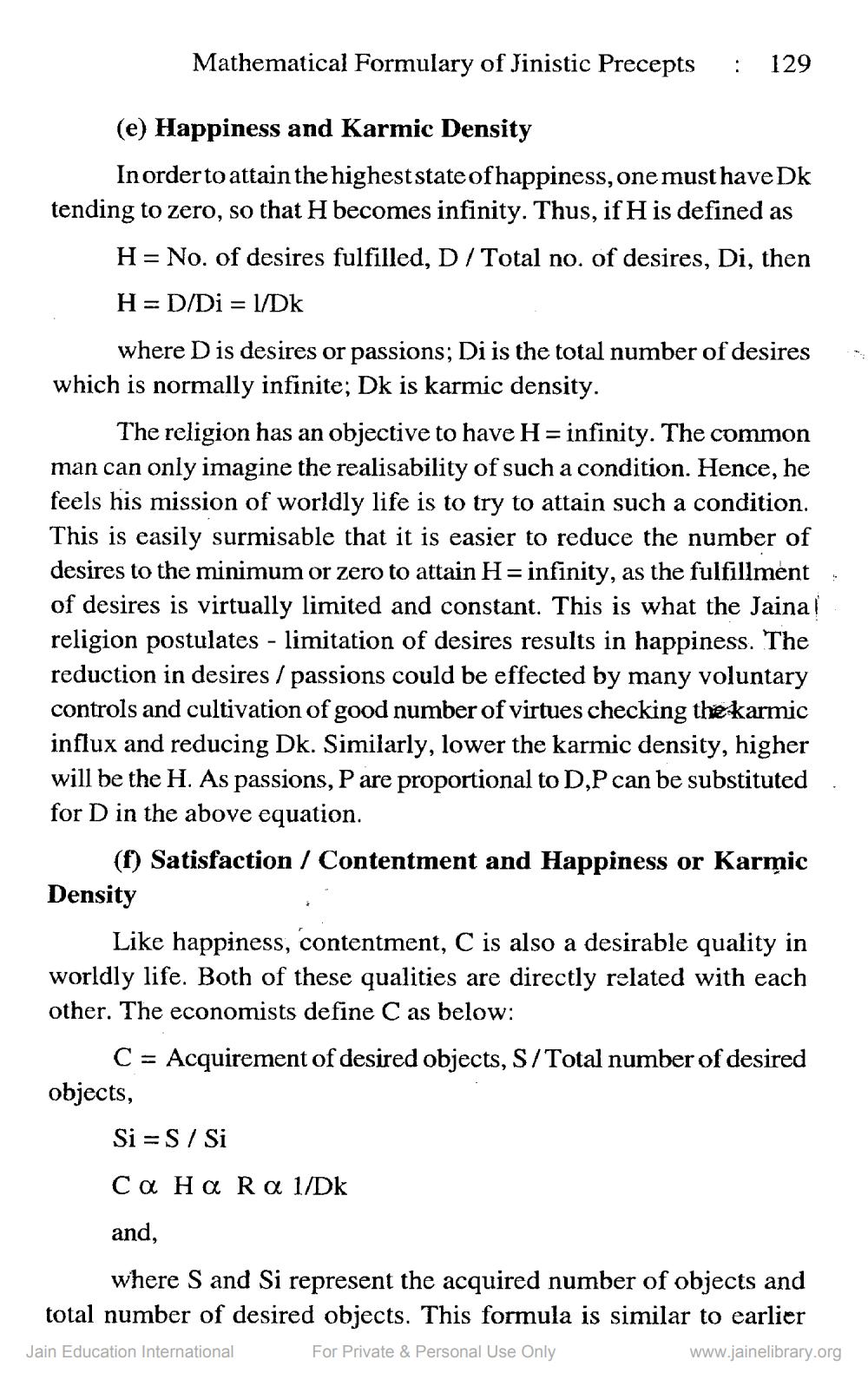________________
Mathematical Formulary of Jinistic Precepts
: 129
(e) Happiness and Karmic Density
Inorder to attain the highest state of happiness, one must have Dk tending to zero, so that H becomes infinity. Thus, if H is defined as
H = No. of desires fulfilled, D/Total no. of desires, Di, then H=D/Di = 1/Dk
where D is desires or passions; Di is the total number of desires which is normally infinite; Dk is karmic density.
The religion has an objective to have H= infinity. The common man can only imagine the realisability of such a condition. Hence, he feels his mission of worldly life is to try to attain such a condition. This is easily surmisable that it is easier to reduce the number of desires to the minimum or zero to attain H=infinity, as the fulfillment of desires is virtually limited and constant. This is what the Jaina! religion postulates - limitation of desires results in happiness. The reduction in desires / passions could be effected by many voluntary controls and cultivation of good number of virtues checking the karmic influx and reducing Dk. Similarly, lower the karmic density, higher will be the H. As passions, P are proportional to D,P can be substituted. for D in the above equation.
(f) Satisfaction / Contentment and Happiness or Karmic Density
Like happiness, contentment, C is also a desirable quality in worldly life. Both of these qualities are directly related with each other. The economists define C as below:
C = Acquirement of desired objects, S/Total number of desired objects,
Si =S / Si Ca Ha Ra 1/Dk
and,
where S and Si represent the acquired number of objects and total number of desired objects. This formula is similar to earlier Jain Education International For Private & Personal Use Only
www.jainelibrary.org




